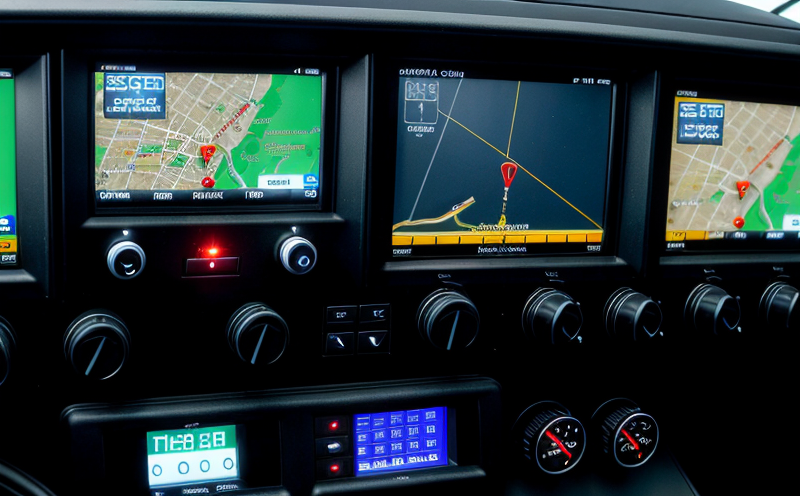EN 62493 Human Exposure Testing to Electromagnetic Fields from Lighting
The CEN standard EN 62493 specifies the human exposure limits and test methods related to electromagnetic fields (EMFs) generated by lighting systems. This is particularly important in marine environments where safety, compliance, and operational efficiency are paramount.
The standard applies to navigation lighting equipment used on ships and other maritime vessels. It aims to ensure that the EMF emissions from these lights do not exceed safe thresholds set forth within the directive. The testing criteria outlined in EN 62493 help prevent potential hazards such as interference with electronic devices, navigational systems, and communication equipment.
Compliance with this standard is essential for manufacturers of marine navigation lighting systems to ensure that their products meet international safety standards before being deployed on ships and other vessels. This includes not only the lights themselves but also any associated control units or components that generate EMFs.
The testing process involves several steps, including initial assessment, measurement setup, and final analysis. During initial assessment, technicians evaluate the design of the lighting system to identify potential sources of electromagnetic interference (EMI). Once identified, they set up a controlled environment where measurements can be taken accurately using specialized equipment capable of detecting very low levels of EMF.
Measurement setups typically include placing sensors at various points around the light source and recording data over time. This allows engineers to determine whether emissions fall within acceptable limits according to EN 62493. After collecting sufficient data, analysts compare it against specified thresholds defined by the standard.
If any part of the measurement exceeds these limits, further adjustments may be necessary until all parameters comply fully with requirements. Compliance testing ensures that products meet regulatory expectations and can operate safely without causing harm to users or surrounding equipment.
For R&D engineers working on new designs for marine navigation lighting systems, understanding EN 62493 is crucial because it guides them towards creating safer, more reliable solutions that adhere to global standards. By incorporating these guidelines into their development processes early on, they can avoid costly delays later down the line due to non-compliance issues.
Quality managers responsible for ensuring product quality must also stay informed about such updates so they can implement appropriate changes within their organizations. Proper documentation of testing procedures and results is vital for meeting certification requirements and demonstrating compliance with relevant directives like EMF directive 2014/53/EU.
In summary, EN 62493 plays a critical role in safeguarding personnel working aboard ships by preventing harmful exposure to excessive electromagnetic fields produced by navigation lighting systems. Its implementation fosters safer operations while promoting technological innovation through rigorous testing protocols designed specifically for this unique application area.
Benefits
Adhering to EN 62493 provides numerous advantages for both manufacturers and end-users of marine navigation lighting systems:
- Safety Assurance: Ensures that the generated electromagnetic fields are within safe limits, protecting personnel from potential health risks.
- Regulatory Compliance: Helps companies meet international safety standards required by directives such as EMF directive 2014/53/EU.
- Innovation Support: Encourages continuous improvement in design and functionality, leading to safer and more efficient products.
- Market Access: Facilitates easier entry into markets where stringent safety regulations are enforced.
- Creditability: Enhances brand reputation among consumers who prioritize safety above all else.
- Cost Efficiency: Avoids costly recalls or redesign efforts caused by non-compliance issues down the road.
By integrating EN 62493 into their product lifecycle management processes, manufacturers can significantly enhance their competitive edge in the marketplace while simultaneously contributing to safer working environments for all involved parties.
Competitive Advantage and Market Impact
Compliance with EN 62493 offers significant competitive advantages that can positively influence market positioning:
- Enhanced Brand Reputation: Demonstrating adherence to stringent safety standards boosts consumer trust and loyalty.
- Increased Customer Confidence: Potential buyers are more likely to choose brands known for meeting high safety benchmarks.
- Premium Pricing Justification: Products that comply with EN 62493 may command higher prices due to perceived added value.
- Better Negotiation Power: Companies can leverage their compliance status during contract negotiations, potentially securing better terms and conditions.
- Expanded Market Reach: Meeting international standards opens up new opportunities in global markets where strict regulations apply.
The ability to demonstrate compliance with EN 62493 not only differentiates a company from competitors but also positions it as a leader in its field. This strategic approach can lead to increased sales and broader market penetration, ultimately driving business growth and success.
Use Cases and Application Examples
- Navigation Lamps: Testing ensures that these essential safety devices emit safe levels of EMF, preventing interference with shipboard electronics.
- Positioning Beacons: Compliance helps maintain accurate positioning signals without causing unwanted disruptions to nearby equipment.
- Safety Lighting Systems: Verification of low EMF emissions ensures that these systems function reliably under all conditions.
- Buoy Lights: Ensuring safe EMF levels is crucial for maintaining effective warning signals at sea.
- Light Emitting Diodes (LEDs): Advanced LED technology requires careful evaluation to avoid excessive EMF generation, especially in close proximity applications like navigation lights.
- Wireless Communication Devices: Integration with lighting systems necessitates rigorous testing to prevent interference between the two components.
These examples illustrate how EN 62493 plays a vital role across various aspects of marine navigation lighting, from basic positioning beacons to complex LED-based solutions. By adhering to this standard, manufacturers can ensure that their products meet rigorous safety standards, enhancing overall performance and reliability.





